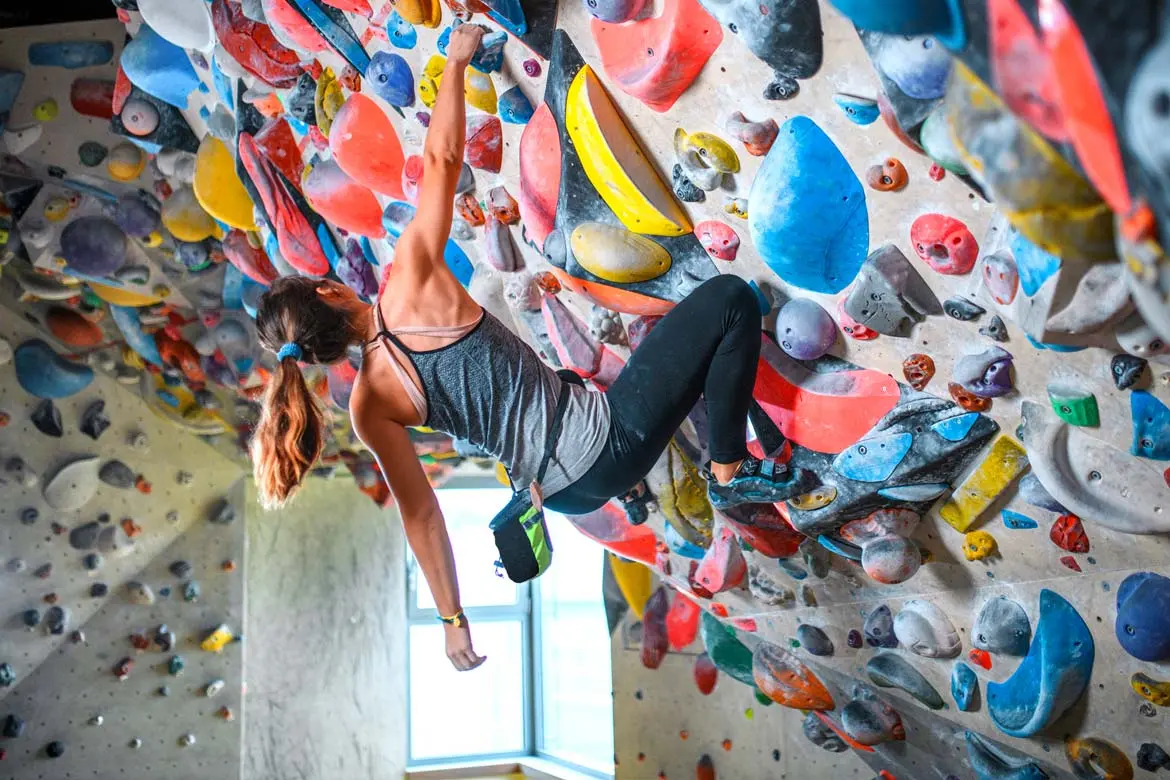Dr Koo Oon Thien Kevin
Orthopaedic Surgeon


Source: Getty Images
Orthopaedic Surgeon
Climbing shoes on, and you're all set for a workout for your mind just as much as for your entire body. For the adventure-hungry, bouldering gives you the thrill and accomplishment of scaling new heights. But perhaps the real appeal of this sport is in finding the best way to reach the finishing line, depending on your skill, comfort level and strength.
The growing appetite to engage in this sport has only been met with an increasing number of aesthetic bouldering studios springing up across the island to pique the interest of the uninitiated as much as the avid climber.
While this may seem like the hottest new activity to try your hand at, it is important to know how to do it safely for an injury-free experience.
Our orthopaedic surgeon, Dr Kevin Koo, shares more about bouldering, the key differences between bouldering and rock climbing, the injuries that are commonly associated with the sport and how you can stay safe while out on a climb.
Bouldering refers to a climb performed on a 4 – 6 metres tall outdoor or indoor gym wall, while leveraging the small or artificial rocks attached to them. Unlike rock climbing, it does not involve the use of a harness or rope.
The boulderer is considered to have completed his or her climb successfully upon reaching the top of the wall using only the rocks on the wall. If the boulderer is unable to continue the climb, he or she can cushion their landing with a bouldering mat, which is placed beneath the bouldering wall.
Rock climbing requires the use of a harness, rope, belay systems and anchors to protect the climber during his or her ascent up a wall that can range from 7 to 18 metres tall, much taller than a bouldering wall.
Both bouldering and rock climbing however, require climbers to use climbing shoes to secure their footing on the rocks, and chalk to keep their hands dry and provide a good grip during the climb.
Bouldering and rock climbing are dynamic, full-body workouts that challenge a number of muscles during each climb. Besides being a good strength training workout, these activities are also a great form of aerobic exercise.
Bouldering can also offer improvements in working memory and decision making as you plan and navigate a climb.
Overall, bouldering and rock climbing are considered safe activities to include in your workout routine that offers many benefits to those who engage in it. However, should you have existing health conditions such as a heart condition, or an existing injury, speak to a doctor for a professional assessment before starting these activities.
For both bouldering and rock climbing, climbers are likely to experience overuse injuries in their arms, hands and fingers to support and propel them during their climb. They may also push themselves too hard, attempting climbing routes beyond their physical abilities which can lead to falls and injuries.
Specific to bouldering, where safety ropes and harness are not used, the risk of sudden falls increases when a climber reaches a point of exhaustion, or slips. A poor landing can lead to injuries such as sprains or even fractures.
Here are some of the common injuries I see in my practice, the symptoms to watch out for and the treatment plan to consider:
Potential reason for the injury:
A fall or awkward landing.
Symptoms:
Ankle pain and swelling, and an inability to bear any weight on the ankle.
Treatment:
Directly after an injury, the patient should receive acute treatment in the form of RICE – rest, ice, compression and elevation. Upon investigating the location and severity of the injury, treatment can be conservative, involving medication, wearing of a brace and physiotherapy. In serious instances, surgery may be required.
Potential reason for the injury:
Overusing your arms, hands and fingers while trying to propel one's body weight upward.
Symptoms:
Pain and/or weakness of the shoulder. The severity of the injury can range from tendinitis to tears in the shoulder tendons.
Treatment:
Conservative treatment includes rest, analgesia (medication to relieve the pain) and physiotherapy. If conservative treatment fails, we may suggest surgical treatment, involving keyhole repair of a torn tendon.
Potential reason for the injury:
Over-exertion of forearm extensor muscles.
Symptoms:
Pain and tenderness over the lateral (outer) area of the elbow.
Treatment:
Includes rest, brace, anti-inflammatories, shockwave therapy and hydrocortisone injections. This condition rarely needs surgery.
This depends on the nature and severity of the injury.
The patient should be able to resume climbing after a few days to a couple of weeks.
This can take up to 6 weeks to heal. Thereafter the patient should progressively resume climbing rather than get back to his or her activities at the same intensity as before.
Can take up to 3 months to heal. Again, the patient should progressively resume climbing rather than get back to his or her activities at the same intensity as before.
You can reduce your risk of getting injured by observing these guidelines:
Apart from promoting overall fitness, bouldering can boost your cognitive function and spice up your usual workout routine. Make use of this guide to safely enjoy both bouldering and rock climbing and get the most of these workouts.
Experienced a fall or an injury after a climb? Book an appointment with Dr Kevin Koo, or our other orthopaedic surgeons for an accurate assessment so you can get back to climbing after an injury.